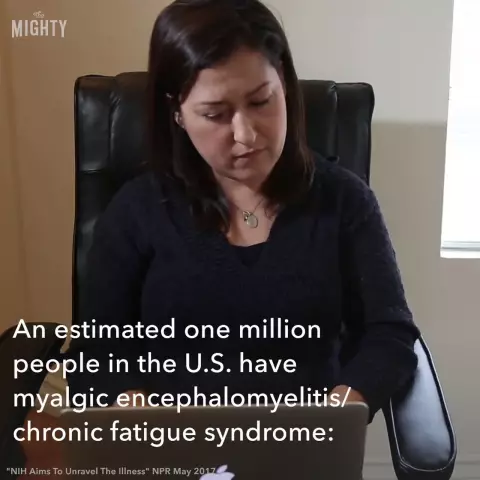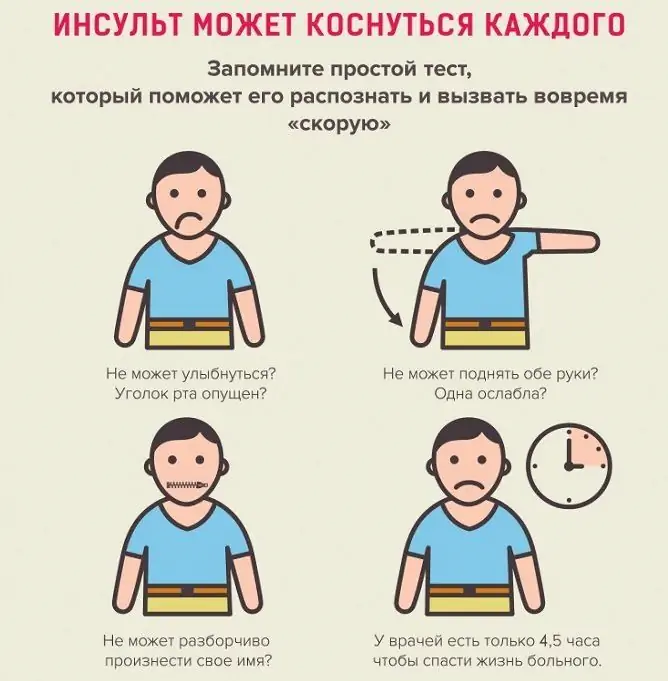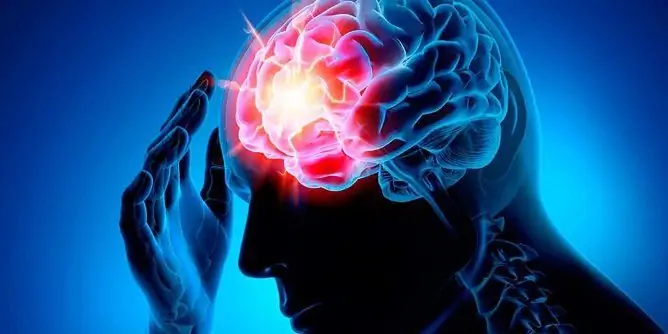- Author Rachel Wainwright [email protected].
- Public 2023-12-15 07:39.
- Last modified 2025-11-02 20:14.
Oophoritis
Oophoritis is an inflammation of the ovary - a paired organ of the female reproductive system, the uterine (fallopian) tube connected to the uterus. The ovaries are responsible for the maturation of eggs and the production of female sex hormones, so inflammation of the ovary, especially chronic oophoritis, can have the most adverse consequences for a woman's health, including causing infertility.
Oophoritis reasons

Oophoritis is almost never an independent disease. The ovaries are located so that the primary infection cannot penetrate them. Most often, inflammation is transmitted to the ovary through the fallopian tube, in this case, oophoritis is accompanied by salpingitis (inflammation of the fallopian tube), this condition is called salpingo-oophoritis, or adnexitis (inflammation of the uterine appendages). The causative agents of oophoritis are sexually transmitted infections (STIs): chlamydia, gonococcus, Trichomonas, etc. Less commonly, inflammation is transmitted to the ovary from another source located in the abdominal cavity, for example, with appendicitis. In this case, the causative agents are streptococci, staphylococci, E. coli.
In some cases, oophoritis can be caused by a general infectious disease of the body, most often of viral origin.
The factors contributing to the occurrence of oophoritis are:
- Hypothermia;
- Diseases of the genitourinary system;
- Focuses of chronic infection in the body;
- Endocrinological diseases;
- Tobacco smoking. Under the influence of tobacco smoke products entering the body, the composition of the mucus that forms the cervical plug changes, as a result of which its barrier properties decrease, which leads to the penetration of infection from the external genital tract;
- Wrong lifestyle, overwork, stress as a factor that reduces the protective properties of the immune system;
- Promiscuous sex life, especially without the use of barrier contraception.
Types and signs of oophoritis
In clinical practice, acute, subacute and chronic oophoritis are distinguished, the process can be one-sided or two-sided.
Acute oophoritis begins suddenly, with sharp pains in the lower abdomen, which can radiate to the groin, lumbosacral region. Urination becomes difficult, sometimes painful, purulent discharge from the vagina appears. Signs of oophoritis are accompanied by a general worsening of the condition: high fever, fever, headaches and muscle-joint pain.

Chronic oophoritis often has a latent onset, that is, to be primary chronic, or develop as a result of untreated acute oophoritis. The only sign of chronic oophoritis for a long time is unexpressed pain syndrome. The pain, as a rule, is unstable, has a dull, aching character, appears with overwork, hypothermia, stress, during intercourse. Most often, such signs of oophoritis in its chronic form appear on the eve of menstruation. Another sign of an advanced chronic form of oophoritis is menstrual irregularities due to impaired production of estrogen by the affected ovary.
In some cases, chronic oophoritis proceeds so implicitly that it is detected only during examination for menstrual irregularities or infertility.
Oophoritis diagnostics
Diagnosis of oophoritis is considered a difficult task, since pain syndrome, which is the main symptom of oophoritis, can accompany any diseases of the abdominal organs. If you suspect oophoritis, a gynecological examination is performed, with a mandatory examination of the vaginal microflora. An ultrasound of the ovaries can show the changes that have occurred as a result of chronic oophoritis; for an acute disease, this method is not informative.
The main method for diagnosing oophoritis is laparoscopy. This is an examination using an endoscope to visualize ovarian tissue and detect signs of inflammation. To find out the degree of ovarian dysfunction in chronic oophoritis, an endocrinological examination is carried out, with an ovulation diary compiled.
Oophoritis treatment
Treatment of chronic and acute oophoritis is different.
In acute oophoritis, a course of antibiotic therapy is prescribed using broad-spectrum antibiotics, often in combination with sulfa drugs. Pain relievers and anti-inflammatory drugs are used, bed rest is desirable, an ice pack is applied to the area of the affected ovary in order to relieve pain. When the signs of acute inflammation subside, they resort to physiotherapeutic procedures: electrophoresis, laser therapy, magnetotherapy, UHF and microwave therapy, etc. Treatment of acute oophoritis is carried out in a hospital setting.
Treatment of chronic oophoritis must be carried out consistently and persistently, otherwise it may threaten the loss of ovarian function. For the treatment of chronic oophoritis, antibacterial therapy is also used, taking into account the identified microflora. Anti-inflammatory steroid drugs are prescribed. The main efforts are aimed at eliminating the infection and combating the adhesive process, for which injections and electrophoresis of resorbable drugs are prescribed. Physiotherapy and balneotherapy are the main methods in the treatment of chronic oophoritis.
It is necessary to understand that the treatment of chronic oophoritis will require a change in the usual way of life for a healthier one. General strengthening procedures are needed that stimulate the body's own defenses, the transition to a healthy diet, the rejection of bad habits and an increase in physical activity to eliminate congestion in the small pelvis. Only if all these conditions are met can we talk about the possibility of a complete cure.
Complications of oophoritis
A complication of acute and aggravated oophoritis can be suppuration of the ovary. This is an acute inflammatory process, as a result of which a purulent fusion of the ovary occurs, and it turns into a thin-walled spherical formation filled with pus. This condition requires urgent surgical intervention, since rupture of the ovary leads to peritonitis.

Chronic oophoritis, which is difficult, with frequent relapses, in combination with chronic salpingitis, can lead to saktosalpinx - a purulent tumor of the uterine appendages. This condition also requires surgery. The ovary and fallopian tube are removed.
The most common complication of chronic oophoritis is the development of an adhesive process that disrupts the patency of the fallopian tubes, and sclerosing of the ovary, in which its tissues are replaced by fibrous tissue, which leads to loss of function. Since the ovary is an endocrine gland, its malfunctioning is reflected in the hormonal background of a woman, which can cause various disorders - from anorgasmia to infertility.
Therefore, the treatment of oophoritis must be started as early as possible, and must be completed.
YouTube video related to the article:
The information is generalized and provided for informational purposes only. At the first sign of illness, see your doctor. Self-medication is hazardous to health!






